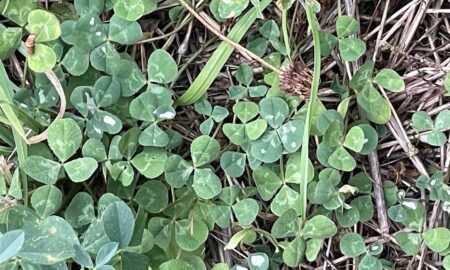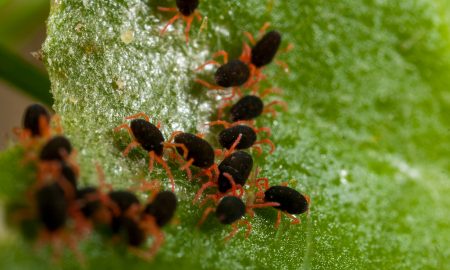A team of researchers at the University of Melbourne are helping to piece together new insights into the biology and habits of earwigs, providing a foundation for improved management.
Researcher Dr Matthew Binns and post-graduate student Oliver Stuart, supported through a GRDC-funded project, are currently immersed in various aspects of earwig-crop interactions.
One output from the project is a DNA barcoding technique that could be adapted for pest monitoring. Some indicative results from their work are summarised below.
Taxonomy
There are 3 main species in Victoria and NSW.
The introduced European earwig (Forficula auricularia) is a recognised pest of establishing crops, particularly canola (although their presence is not always problematic).
The common brown earwig (Labidura truncata) is a native species that feeds on other insects, including pests.
The black field earwig (Nala lividipes) is a minor pest species in the south, occasionally attacking crops.
However, the project has found another earwig family that is difficult to identify, the Anisolabids. These are more taxonomically diverse than expected, and there are some potentially undescribed species whose pest status is unclear.
Distribution
The research has shown that European earwigs are broadly distributed in temperate, farmed areas that receive more than 400 mm of annual rainfall. They are generally not found in areas of native vegetation. Anecdotally, they are more often associated with soil types that retain moisture.
In contrast, the common brown earwig is found in native vegetation and to a lesser extent in cropping environments. However, an interesting finding was that populations were higher within mixed vegetation stands along fence-lines than in crops. They are found more commonly in summer than winter, which will limit their ability to prey on pests of winter crops.
Lifecycle of European earwigs
Because of the importance of European earwigs as a grain pest, field research has been undertaken to better understand the lifecycle of this species.
European earwigs are ‘social insects’. Populations are generally found aggregating in clusters and nests under clods throughout paddocks.
However, the recent research suggests that there is an exception to this behaviour in early in autumn.
As temperatures decline in March, and well before the average autumn break, female earwigs appear to individually enter paddocks and disperse to create and excavate nest sites under soil clods. The first (and main) brood of eggs is laid from May and takes ~4-6 weeks to hatch. Earwig juveniles hatch through June and July (temperature dependent) and progress through 4 stages of juvenile development, each taking ~4-6 weeks. Large numbers of young adults appear in November.
As crops senesce and are harvested, there appears to be a mass exodus of earwigs from cropped paddocks to neighbouring landscapes with diverse vegetation.
European earwigs show a preference for sheltering in aggregations over summer under bark on standing or fallen trees.
Early in autumn they re-enter paddocks.
As the project continues, assessment of earwig feeding behaviour on canola is in progress to better understand the habits of these invertebrates provide sound, scientific information that will guide management planning.
Acknowledgements
This research is funded by GRDC. Project partners involved in this research include CSIRO (lead organisation), The University of Melbourne, NSWDPI, SARDI, WA DPIRD and cesar.
Cover image: Photo by Joseph Berger, Bugwood, CC by 3.0





